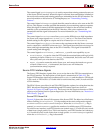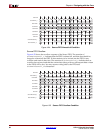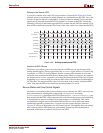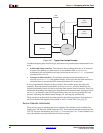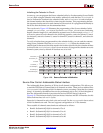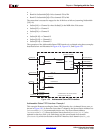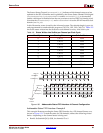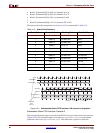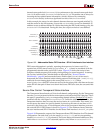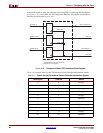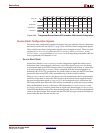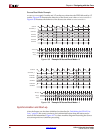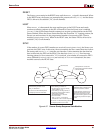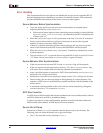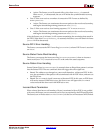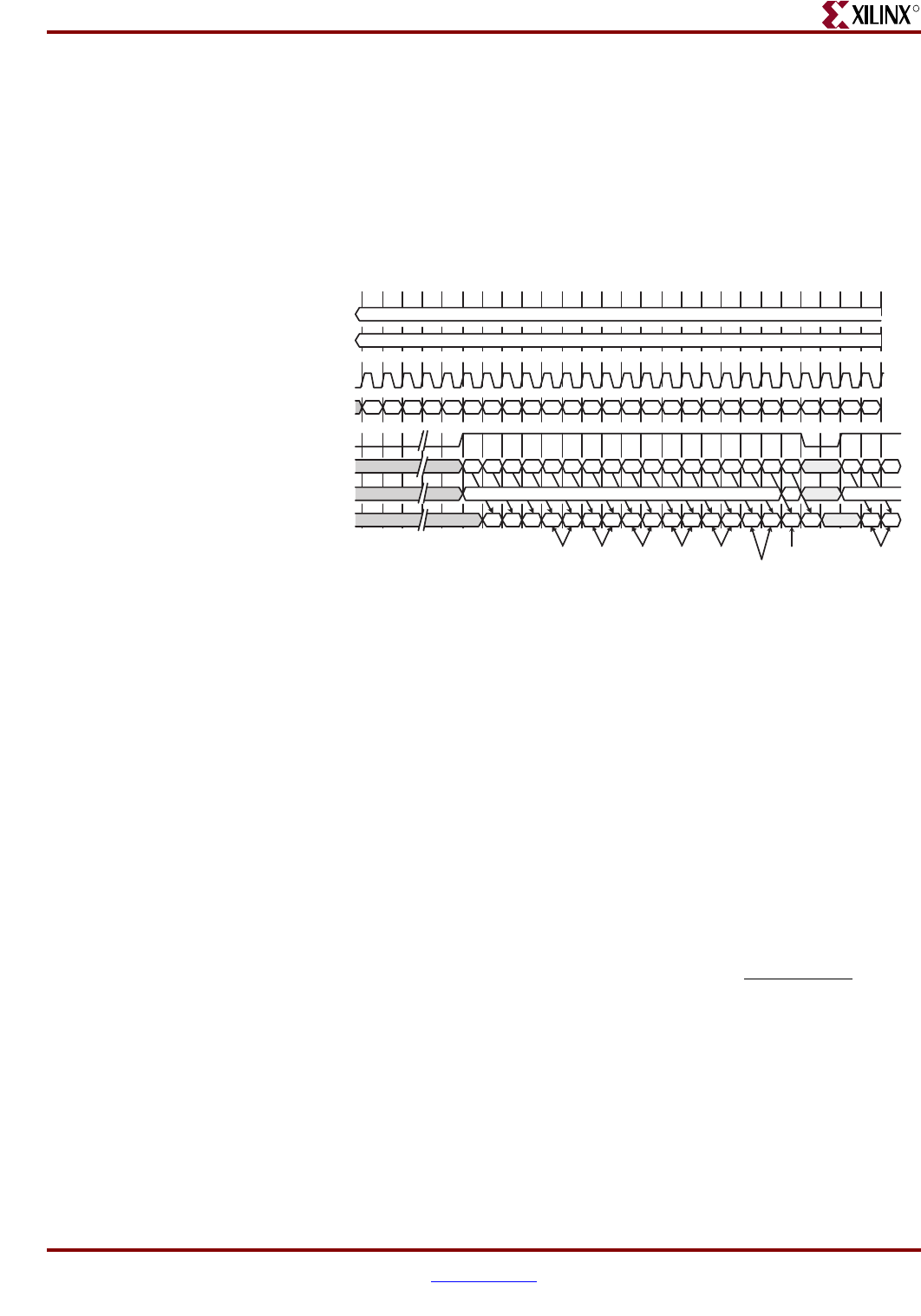
SPI-4.2 Lite v4.3 User Guide www.xilinx.com 91
UG181 June 27, 2008
Source Core
R
internal status path clock (SrcStatClk) is synchronous to the external status path clock
(TSClk). In other words, SrcStatClk is tied to TSClk_GP. This enables one to always be
accessing the last updated status information, which is achieved by connecting
SrcStatAddr directly to the most significant four bits of the SrcStatCh bus.
In this example, the status for each channel alternates between starving and satisfied. To
read the status for the full sequence, first set the SrcStatAddr to zero for channels 0-15,
and then to one to address channel 16. Notice that during the DIP-2 and framing cycles, the
SrcStatValid is deasserted. During this time, the output on the bus is not defined.
FIFO status information is periodic, repeating the sequence of a frame word (11), a
repeated set of FIFO status words (SrcCalendar_M + 1 times) in accordance with the
programmed calendar order, and a DIP-2 value. Figure 4-32 shows the receipt of one
complete calendar sequence followed by the beginning of a second sequence. At startup,
the circuitry initializes the Calendar buffer as described (See “Source Calendar
Initialization,” page 86) and asserts the Source Enable signal (SrcEn). After reset is
deasserted, the Source Interface sends training patterns on the data path (TDat[15:0]),
and looks for non-framing data on the status path (TStat[1:0]). When
NumDip2Matches valid DIP2 values are received on the status path, valid data can be sent
on the SPI-4.2 data path. If there is no data in the Source FIFO to be sent, the core sends idle
cycles.
Source Flow Control: Transparent Status Interface
The Transparent Status Interface is 2 bits for all channel configurations. For the Transparent
Interface, you are presented with the current status received on the SPI-4.2 Interface. The 2-
bit status is presented to you by a corresponding channel address (SrcStatCh[7:0]
) and is
qualified with the valid signal SrcStatChValid. Unlike the Addressable Interface, the
transparent interface does not store the received status in a cyclic buffer. This means you
can not access the status of a specific channel, but receives the status in real time as it is
received by the Source core. A block diagram of how the Transparent Interface processes
the received SPI-4.2 FIFO Status is shown in Figure 4-33. The minimum latency between
the user interface and SPI-4.2 Interface for this Status Path interface is 4 TSClk_GP cycles.
Figure 4-34 illustrates the output of the Transparent Status FIFO Interface for a 256-channel
configuration. On each clock cycle, the status (SrcStat[1:0]) and its corresponding
channel (SrcStatCh[7:0]) is presented. The Source Status and channel address are only
valid when SrcStatChValid is asserted (equal to one). When SrcStatChValid is
Figure 4-32: Addressable Status FIFO Interface - SPI-4.2 Interface to User Interface
0 = 0000 0000
16 = 0 0001 0000
SrcCalendar_M
SrcCalendar_Len
TSClk = SrcStatClk
TStat
11 00 10 00 10 00 10 00 10 00 10 00 10 00 10 00 10 dip 1100 10 00 10 00 10 00
SrcStatValid
0x888 0x8888 0x88888 0x888888
0x8888888
0x88 0x8888888A0x88888888
SrcStatCh[7:0]
0 1 2 3 4 5 6 7 8 9 10 11 12 13 14 15 16 0 1 2
SrcStat[31:0]
SrcStatAddr[3:0] =
SrcStatCh[7:4]
HEX
0x8 0x8 0x00x0
0
1
0



